Gray-Scott Model at F 0.0700, k 0.0610
These images and movie demonstrate the behavior of the Gray-Scott reaction-diffusion system with σ=Du/Dv=2 and parameters F=0.0700, k=0.0610.
Negative worms (right, bottom-right) and more elaborate shapes like the "double negative worms" (upper-right) and negative loops (or normal worm surrounded by red space) grow to fill the space. Negatons in isolation are stable and inert (just to left of center). After the space is filled, the worm tips prevail, causing sharp bends to become longer and more convoluted, and simpler loops to get squeezed out. This process continues for 400,000 tu or longer. (glossary of terms)
 increase F increase F
 | |||
  |
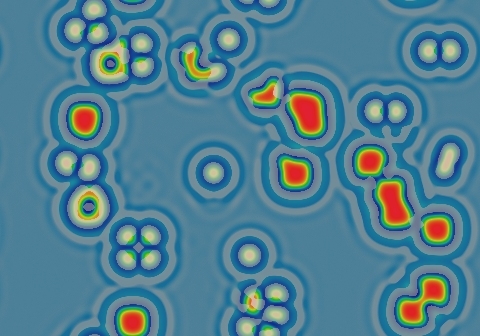
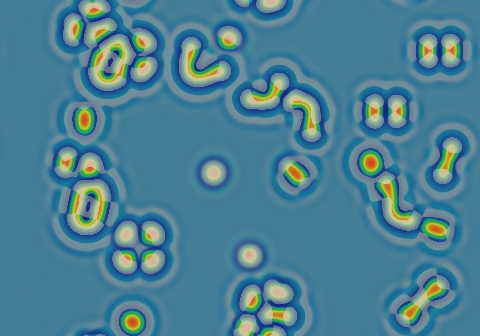
|
15 frames/sec.; each fr. is 216 iter. steps = 108 tu; 1800 fr. total (194,400 tu) |  increase k 
|
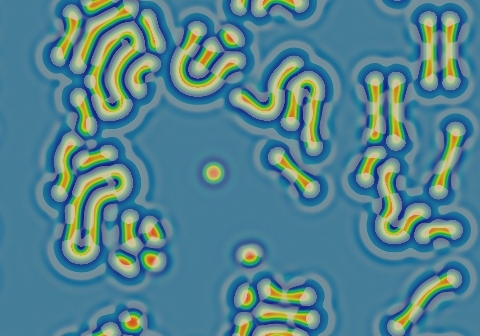
|
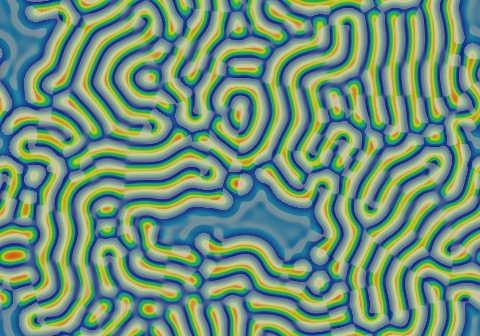
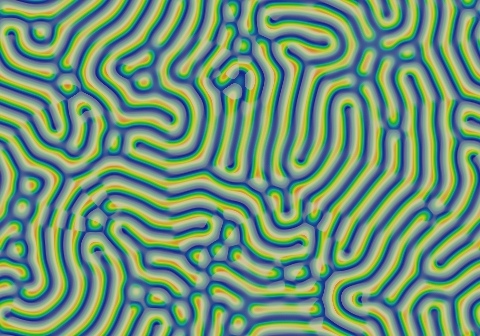
| ||
 decrease F decrease F
 |
In these images:
- Color indicates level of u, ranging from purple (lowest u values) through blue, aqua, green, yellow and pink/red (highest u values)
- Areas where u is increasing are lightened to a light pastel tone; where u is decreasing the color is vivid.
- In areas where u is changing by less than ±3×10-6 per tu, an intermediate pastel color is seen. This includes areas that are in steady state or equilibrium.
''tu'' is the dimensionless unit of time, and ''lu'' the dimensionless unit of length, implicit in the equations that define the reaction-diffusion model. The grids for these simulations use Δx=1/143 lu and Δt=1/2 tu; the system is 3.2 lu wide. The simulation meets itself at the edges (periodic boundary condition); all images tile seamlessly if used as wallpaper.
Go back to Gray-Scott pattern index
This page was written in the "embarrassingly readable" markup language RHTF, and was last updated on 2019 Jan 05.
 s.11
s.11